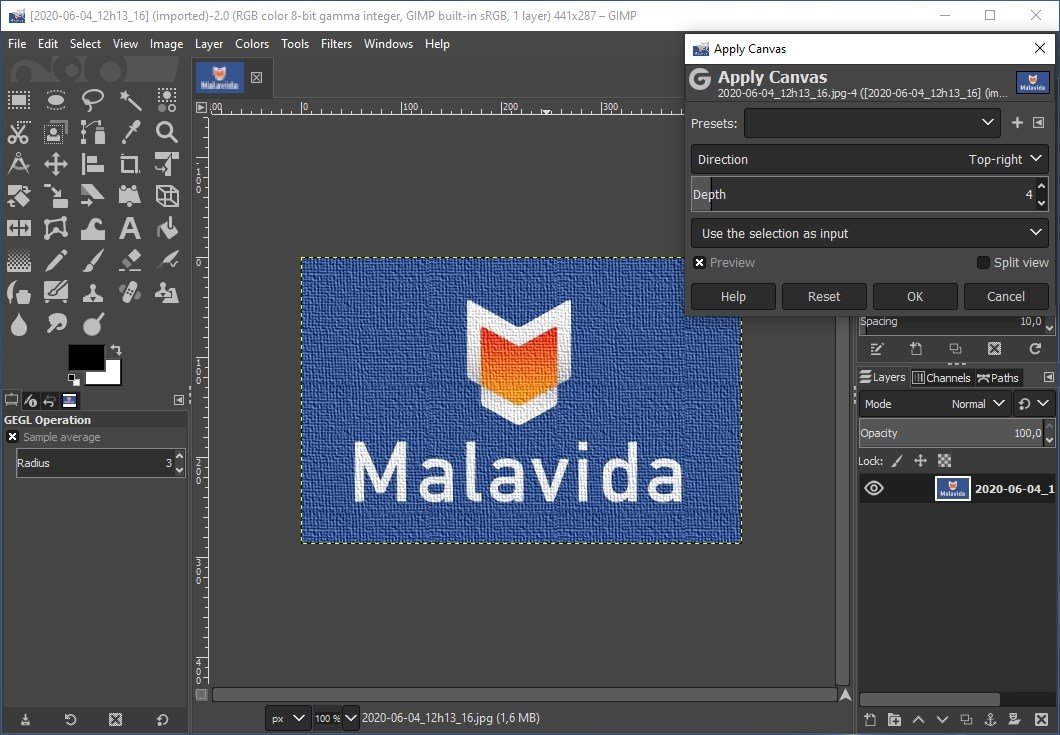

You apply a gradient to the surface of an image using GIMP's color modes. GIMP does color blending through its blend tool. CMYK, LAB and HSV (hue, saturation, value) are supported this way. Other color spaces are supported using decomposition where each channel of the new color space becomes a black and white image. Colors in GIMP can also be selected using hexadecimal color codes as used in HTML color selection and it has native support for indexed color and RGB color spaces. The built-in color choosers include RGB/HSV selector or scales, water-color selector, CMYK selector and a color-wheel selector.

GIMP has several ways of selecting colors including palettes, color choosers and using an eyedropper tool to select a color on the canvas. The fourth channel that may be part of a layer is the alpha channel (or layer mask), this channel measures opacity where a whole or part of an image can be completely visible, partially visible or invisible. Color sub-layers look like slightly different gray images, but when put together they make a complete image. In an RGB image there are normally 3 or 4 channels, consisting of a red, green and blue channel. Each layer in an image is made up of several channels. The blur and sharpen tool is a brush that blurs and sharpens sections of an image and the dodge and burn tool is a brush that makes target pixels lighter (dodges) or darker (burns).Īn image being edited in GIMP can consist of many layers. The perspective clone tool works in a similar way to the clone tool, but also allows a user to alter and correct distance changes. These use a more complex algorithm to enable a user to complete time consuming or difficult tasks, and include the clone tool that copies pixels using a brush, and the healing brush which copies pixels from an area and corrects the tone and color where it is being used. GIMP also has a selection of smart tools. Tools such as the bucket fill and blend tools are used to change large regions of space in an image and can be used to help blend images. You can use them to create new or blended pixels. It's more common tools include a paint brush, pencil, airbrush, eraser and ink tools. GIMP is the image editing tool of choice for many users, in large part due to its many editing tools.
#GIMP 2.8 DOWNLOAD FREE FULL#
It’s a full featured, multi-platform graphics editor and its totally awesome. This is one of the reasons why I like GIMP.

Many top of the line packages come with the features everyone wants, and unfortunately, with the price tag to go with it. In today's graphic intensive world, having a decent, full featured editor is a must. A bonus section on the included DVD describes special techniques for web graphics.GIMP 2.8 for Photographers has evolved from classroom materials that the author developed and taught in courses and workshops on image editing with the GIMP.Create and edit graphics and digital photos with this world class open source graphic editing tool. The most important editing functions are presented in individual, easy-to-follow workshops. Topics include the new user interface and tools, the basics of image editing and simple adjustments, advanced techniques using layers and masks, developing RAW images, working with the improved text tool, and preparing high-quality black-and-white images.
#GIMP 2.8 DOWNLOAD FREE MAC OS#
The only open source tool in this market is the GIMP, which has developed into a powerful, multiplatform system running on Linux, Mac OS X, and Microsoft Windows.GIMP 2.8 for Photographers is a beginner's guide to the only open source image editing tool that provides a no-cost alternative to expensive programs such as Photoshop. Image editing tools, most notably Photoshop, are usually sophisticated and deep applications, and are fairly expensive. Image editing is a crucial element in the photographic workflow.


 0 kommentar(er)
0 kommentar(er)
